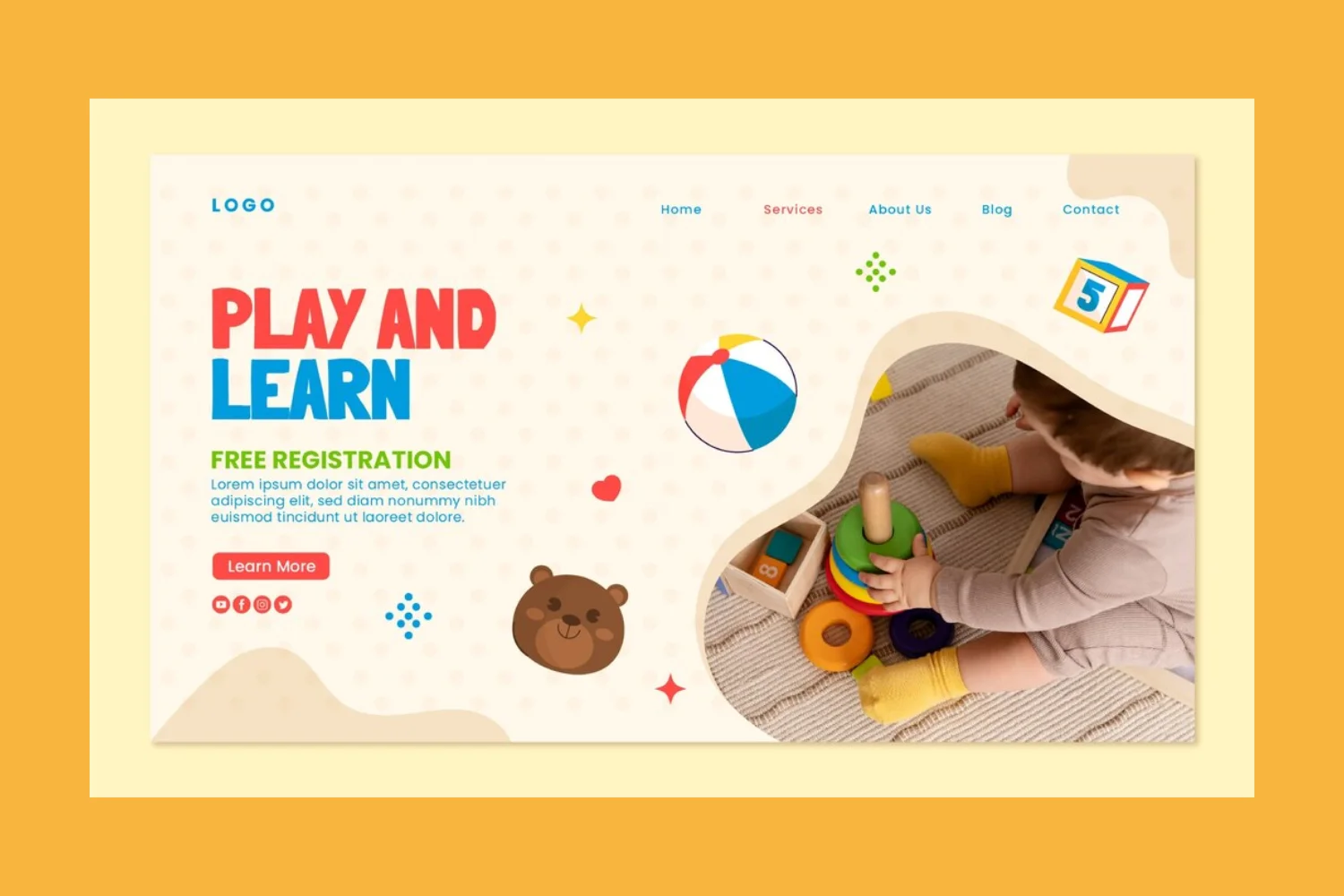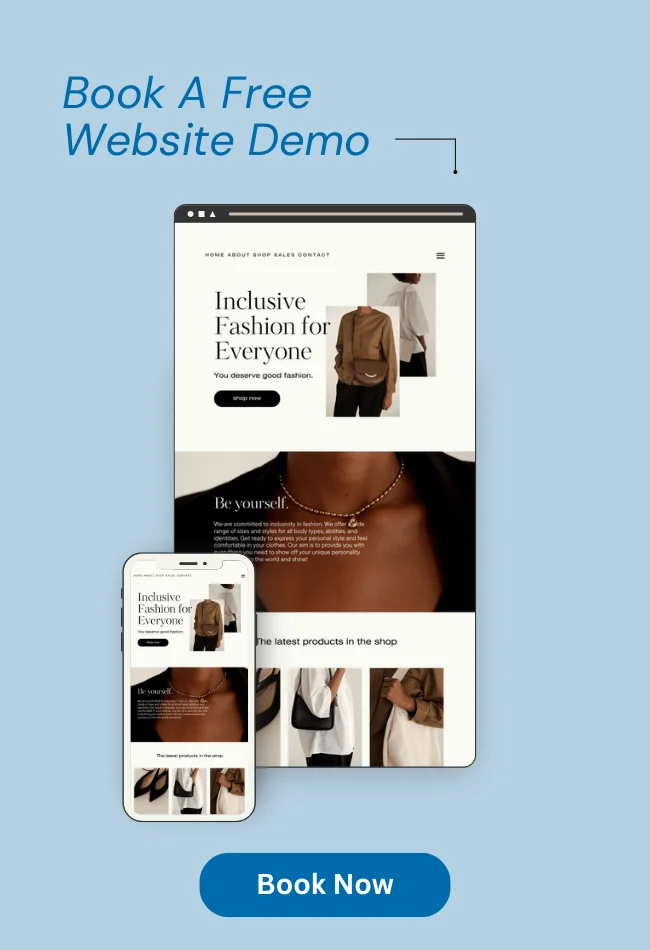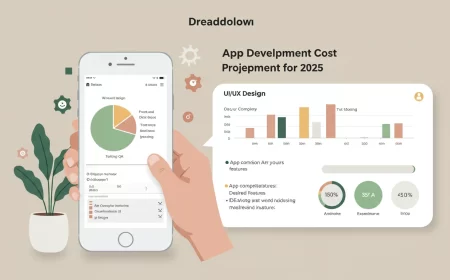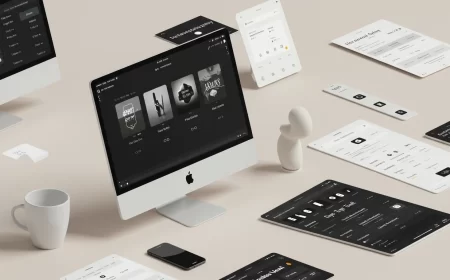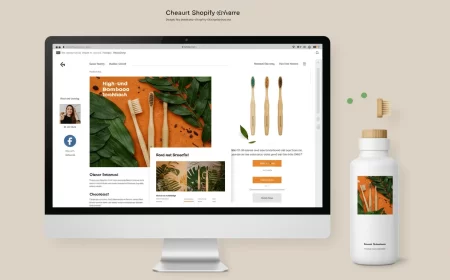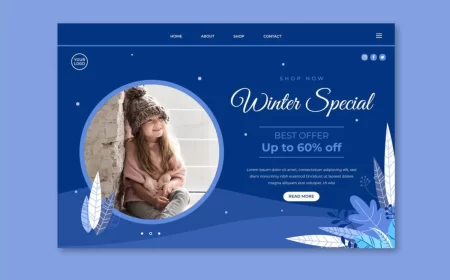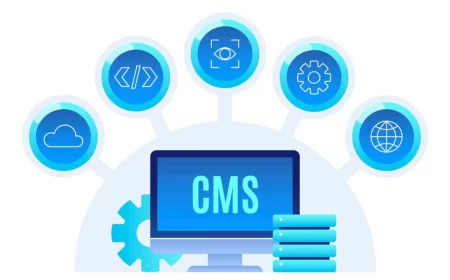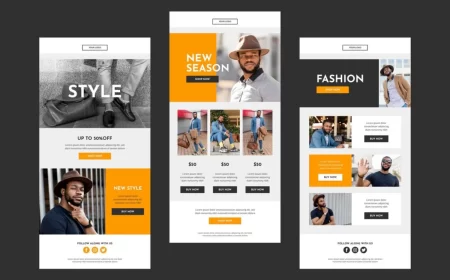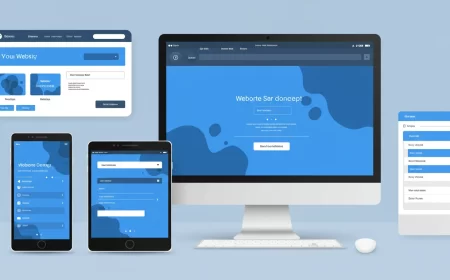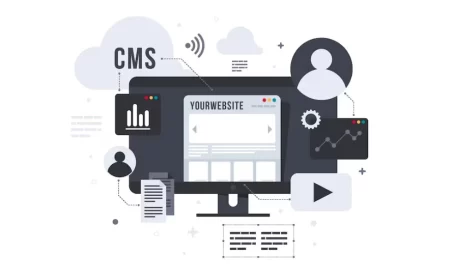In today’s digital landscape, a kindergarten’s online presence is a vital bridge connecting the school, parents, and prospective families. Far from being just a digital brochure, the best kindergarten websites serve as dynamic hubs for communication, education, and community building. They are designed to be welcoming, informative, and visually engaging, reflecting the vibrant and nurturing environment of early childhood education. An effective website for a kindergarten understands its diverse audience—from busy parents seeking enrollment information to curious children exploring educational content—and caters to their unique needs with thoughtful design and relevant features.
This comprehensive guide will delve into the essential characteristics that define a top-tier kindergarten website. We’ll explore the strategic elements that make these sites impactful, provide actionable advice on building your own, and highlight inspiring examples that master the art of digital engagement for early learners. Whether you’re a school administrator looking to enhance your online presence or a parent seeking a transparent and communicative institution, understanding these best practices is crucial for fostering a supportive and connected learning community.
Why an Effective Kindergarten Website is Indispensable Today
The role of a kindergarten website has expanded significantly beyond basic information dissemination. In an era where digital literacy is increasingly important, a strong online presence for an early childhood institution offers numerous benefits:
- First Impressions & Trust Building: For prospective parents, the website is often their first interaction with your kindergarten. A professional, engaging, and informative site immediately builds trust and conveys the quality of your program.
- Streamlined Communication: It serves as a central hub for daily updates, announcements, event calendars, and direct communication channels, ensuring parents are always informed and connected.
- Transparency & Information Access: Parents seek detailed information about curriculum, daily schedules, staff qualifications, safety protocols, and enrollment procedures. A well-organized website provides this crucial data readily.
- Showcasing Your Philosophy & Environment: High-quality photos and videos can vividly portray the nurturing atmosphere, engaging activities, and learning philosophy of your kindergarten, helping parents visualize their child thriving in your care.
- Parental Engagement & Resources: Websites can offer valuable resources for parents, such as learning tips, educational games, and links to support services, fostering a collaborative approach to early childhood development.
- Accessibility & Convenience: A mobile-responsive website allows busy parents to access information anytime, anywhere, from their smartphones or tablets.
- Attracting & Retaining Talent: A professional website also showcases your institution’s commitment to excellence, which can be attractive to prospective educators and staff.
Key Features of the Best Kindergarten Websites
What makes a kindergarten website truly effective? It’s a harmonious blend of aesthetics, functionality, and content tailored specifically for its unique audience.
- Visually Appealing & Child-Friendly Design:
- Bright, inviting colors: Use a palette that feels warm, joyful, and stimulating without being overwhelming.
- Engaging graphics & illustrations: Incorporate playful elements, friendly characters, and clear icons that resonate with young children and their parents.
- High-quality photos & videos: Showcase real children engaged in activities, happy teachers, and the welcoming environment of your classrooms and outdoor spaces. Avoid generic stock photos.
- Readable fonts: Choose clear, legible fonts that are easy for parents to read and for children to recognize. Avoid overly decorative or thin fonts.
- Intuitive and Clear Navigation:
- Simple main menu: Categories like “About Us,” “Programs,” “Admissions,” “Parent Resources,” and “Contact” should be prominently displayed and easy to understand.
- Logical flow of information: Guide visitors seamlessly through the site, from general information to specific details.
- Mobile responsiveness: The site must adapt flawlessly to desktops, tablets, and smartphones.
- Comprehensive Content Sections:
- About Us/Our Philosophy: A heartfelt section detailing the kindergarten’s mission, vision, educational approach (e.g., Montessori, Reggio Emilia, play-based), and values.
- Programs & Curriculum: Detailed descriptions of daily schedules, learning objectives, activities, and age groups served.
- Admissions & Enrollment: Clear information on application procedures, deadlines, tuition fees, and required documents. Include downloadable forms if applicable.
- Meet Our Team: Photos and short bios of teachers and staff, highlighting their qualifications, experience, and passion for early childhood education. This builds trust.
- Parent Resources: A dedicated section with useful links, FAQs, school policies, parent handbooks, and tips for supporting learning at home.
- Calendar & Events: An interactive calendar for school holidays, parent-teacher conferences, special events, and field trips.
- News & Announcements: A blog or news section for updates on school activities, achievements, and important notices.
- Photo/Video Gallery: A secure gallery showcasing classroom activities, special events, and the children’s joyful experiences (with parental consent).
- Robust Communication Tools:
- Contact Information: Clearly display phone numbers, email addresses, and a physical address with a map.
- Contact Form: An easy way for prospective parents to inquire.
- Parent Portal (Optional but Recommended): A secure login area for existing parents to access private classroom updates, progress reports, and direct messaging with teachers.
- Safety and Privacy:
- Privacy Policy: A clear and easily accessible privacy policy outlining how personal data (especially children’s photos and information) is collected, used, and protected.
- Secure Photo Galleries: Ensure that photos of children are only accessible to authorized parents or are used with explicit consent and without identifying information.
- Data Security: Implement SSL certificates and other security measures to protect sensitive information submitted through forms or portals.
- Online Safety Tips: Consider providing resources for parents on general online safety for young children.
- SEO & Speed Optimization:
- Fast Loading Times: Websites should load quickly to prevent visitors from leaving.
- Search Engine Optimization (SEO): Optimized content and structure help parents find your kindergarten through search engines.
Inspiring Examples: The Best Kindergarten Websites in Action
While specific kindergarten websites can be proprietary or local, we can draw inspiration from the design principles and features of highly effective early childhood education platforms and exemplary school websites.
Websites Exemplifying Key Kindergarten Features:
- Mobirise AI Kindergarten Templates: While a builder, their examples showcase ideal kindergarten website layouts: colorful designs, playful themes, clear sections for activities, staff, and announcements, and a focus on visual appeal for both children and parents.
- Square Stash Preschool Website Inspirations: This collection highlights websites with vibrant colors, fun fonts (that are still clear), intuitive layouts, heartfelt images, and clear communication of mission, demonstrating effective visual storytelling.
- Dribbble – Kindergarten Website Designs: A platform for designers to showcase their work, Dribbble features many conceptual and real-world kindergarten website UI designs that emphasize child-friendly aesthetics, engaging visuals, and clear user flows.
- Pinterest – Kindergarten Website Design Ideas: Offers a visual feast of design inspiration, showcasing themes, color palettes, and layouts that are popular and effective for kindergarten websites.
Platforms with Strong Communication & Engagement Tools:
- SchoolCafé: While for school nutrition, its focus on integrated systems for management, intuitive interfaces for staff and families, and seamless integration for communication serves as a model for comprehensive school portals.
- The Lunch Box (Chef Ann Foundation): Although a resource for school food, its clear organization, focus on transparency (recipes, nutrition), and resources for parents demonstrate excellent content strategy for institutional websites.
- Kinderpedia: This platform offers a suite of real-time communication features, secure multimedia galleries, personalized news feeds, and instant messaging, which are ideal for fostering parent engagement in kindergartens.
- Bloomz: A comprehensive parent-teacher communication app that also offers “Slick Sites” (school websites). Its features like two-way messaging, student portfolios, and AI-powered communication tools are highly effective for kindergarten-parent interaction.
- Seesaw: A student-driven digital portfolio that allows teachers to share photos, videos, and updates on student progress with parents, fostering a strong home-school connection.
- ClassDojo: Helps teachers build positive classroom culture and communicate with parents through photos, videos, and messages, making it a popular tool for early childhood educators.
Websites Highlighting Educational Philosophy & Resources:
- Center for Early Learning Literacy (CELL): This site, while academic, provides excellent examples of how to organize resources for parents and practitioners, focusing on evidence-based early literacy practices.
- Raising Children Network (Online Safety for Children): While not a kindergarten site, it offers crucial information on online safety for young children, a topic that kindergarten websites should ideally address or link to.
- Montessori.org: Websites of accredited Montessori schools often feature detailed explanations of their educational philosophy, curriculum, and how it benefits young children, serving as excellent examples for articulating a unique approach.
- ReggioChildren.it: The official website for the Reggio Emilia Approach, showcasing how a specific educational philosophy can be presented with rich visual content and detailed explanations.
These examples collectively demonstrate that the best kindergarten websites are thoughtful, engaging, and functional, serving as invaluable tools for modern early childhood education.
Building Your Own Best Kindergarten Website
Creating a standout kindergarten website is an achievable goal with the right approach. Here are some tips to guide you:
- Define Your Purpose: Before you start, clearly articulate what you want your website to achieve (e.g., attract new enrollments, improve parent communication, showcase curriculum).
- Choose the Right Platform:
- For ease of use & templates: Wix, Squarespace, WordPress.com. These offer intuitive drag-and-drop builders and child-friendly themes.
- For school-specific features: Consider platforms like SchoolCafé, Kinderpedia, or Bloomz if your primary need is integrated communication and management.
- Invest in Quality Photography: This is paramount. Hire a professional photographer or invest in a good camera and learn basic photography skills to capture authentic, joyful moments at your kindergarten.
- Prioritize Mobile-First Design: Assume parents will view your site on their phones. Ensure it looks and functions perfectly on small screens.
- Write Clear, Concise, and Engaging Content: Use simple language. Break up text with headings, bullet points, and images. Tell your story with warmth and enthusiasm.
- Focus on Key Information: Make it easy to find admissions details, programs, contact information, and your philosophy.
- Implement Strong SEO Practices: Use relevant keywords (e.g., “kindergarten [your city],” “preschool programs,” “early childhood education”) in your content and page titles to help parents find you through search engines.
- Ensure Accessibility: Choose color combinations with good contrast and use clear font sizes to make your site usable for everyone.
- Prioritize Safety & Privacy: Clearly state your privacy policy and ensure any photo galleries or parent portals are secure and consent-driven.
- Get Feedback: Before launching, ask current parents or trusted friends to navigate your site and provide honest feedback on clarity, ease of use, and overall impression.
- Maintain and Update Regularly: Keep your calendar current, update news sections, and refresh photos periodically to ensure the site remains a dynamic and accurate reflection of your kindergarten.
Frequently Asked Questions (FAQs)
Q1: What is the most important feature for a kindergarten website?
The most important feature is a visually appealing and child-friendly design combined with clear, comprehensive information about programs, admissions, and staff. High-quality photos and easy navigation are paramount for attracting and informing parents.
Q2: How can a kindergarten website ensure the safety and privacy of children’s photos?
To ensure safety and privacy, kindergarten websites should:
- Obtain explicit written consent from parents before publishing any photos of children.
- Avoid identifying children by name in public photo galleries.
- Use secure, password-protected parent portals for sharing more personalized or identifiable photos.
- Clearly state your privacy policy regarding photo usage on the website.
Q3: What kind of content should be included in the “Parent Resources” section?
A “Parent Resources” section can include:
- FAQs about the kindergarten.
- Downloadable handbooks or policy documents.
- Links to educational articles or activities for home learning.
- Information on parent workshops or events.
- Tips for preparing children for kindergarten.
- Links to external resources for early childhood development or support services.
Q4: How often should a kindergarten website be updated?
The website’s calendar and news/announcement sections should be updated frequently (e.g., weekly or as events occur). General program information, staff bios, and photos should be reviewed and refreshed at least annually to ensure accuracy and freshness.
Q5: Is it necessary for a kindergarten website to have a blog?
While not strictly necessary, a blog can significantly enhance a kindergarten website. It allows you to share insights into your educational philosophy, highlight classroom activities, provide parenting tips, and improve your search engine ranking by regularly adding fresh, relevant content.
Q6: How can a kindergarten website foster better communication between parents and teachers?
Effective communication can be fostered through:
- Dedicated parent portals with secure messaging features.
- Classroom update sections (e.g., daily photos, activity summaries).
- Interactive event calendars with RSVP options.
- Clear contact information for teachers and administration.
- Integration with parent communication apps like Kinderpedia or Bloomz.
Q7: What are some common mistakes to avoid when designing a kindergarten website?
Common mistakes include:
- Using low-quality or generic stock photos instead of real images.
- Overwhelming parents with too much text or cluttered layouts.
- Having a non-mobile-responsive design.
- Lacking clear calls-to-action (e.g., “Schedule a Tour,” “Enroll Now”).
- Failing to provide essential information (admissions, hours, contact).
- Not addressing safety and privacy concerns transparently.

